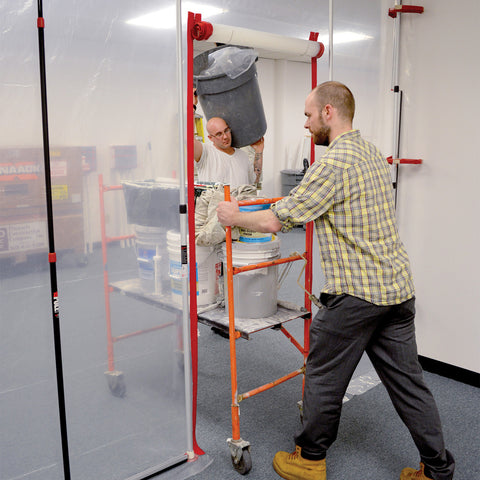Whether you’re a novice or a seasoned pro — and whether the job’s small or large — one of the most important aspects of any spray painting work is safety. Spray painting comes with numerous hazards, ranging from exposure to toxic substances to fire risk to environmental damage, and it’s critical that you protect yourself, others, and your surroundings from these potential dangers as much as possible.
In this post, we’ll take a look at isolation and containment of spray painting work areas, including why it’s necessary and how to do it. Read on to learn just what you’re shielding from and how to maximize your safety at work.
Why the need for isolation and containment?
Whenever you spray paint, you’re working with odorous and possibly flammable substances that are potentially toxic and damaging to humans, animals, and the environment. If your work area isn’t properly and effectively isolated, you risk releasing those solvents and compounds into the air and hurting the environment or inadvertently causing harm to yourself, other workers, clients, family members, or pets.
Add to that electrical hazards, problems with over-spray, and the necessity of dust containment, and you’ve got an activity that poses considerable issues if it’s not skillfully managed.
How to isolate and contain your work area
Your isolation strategy should completely shield your work area from any nearby flammable objects or electrical dangers, and it should minimise air pollutants and toxins. It should also prevent dust contamination from blowing in and affecting your work or blowing outward.
Isolate.
Where possible, create a fully self-contained space ZipWall Systems provides a portable, temporary, easy solution). Utilising plastic sheeting and a quick-fix pole system, you can isolate an area in a matter of minutes. Better still, the poles are reusable and will be a valuable asset in any toolkit.

If you’re just isolating one room, Temporary Renovator Doors are ideal, as they eliminate the risk of drifting dust ruining your shiny new paint job.
Ventilate.
Be sure to provide for sufficient ventilation and air flow. Portable Ventilation Fans can be used to bring in clean air or reversed to remove the contaminated air.

Combine the fans with Portable Overspray Filter Boxes, and you can successfully remove overspray and minimise odors. (Filters can be customised to suit your application; get in touch, and we’ll find a specific solution for you.)
Reduce.
If you’re using an airless sprayer, consider Graco FFLP or Wagner HEA tips, as both are low-pressure options that create much less overspray. If you’re doing smaller areas like kitchen cabinetry, then consider using an HVLP System, as they are particularly helpful.

Where possible, it’s best to do your painting work in spray booths, which are specifically designed to capture and contain spray painting emissions. When that’s not feasible, however, or if you’re undertaking a much smaller job that renders a booth unnecessary, you can use any number of Surface Protection Solutions (drop sheets, carpet protection films, hard surfaces boards, polyweaves, etc.) to achieve adequate isolation and containment.
Need help finding materials or products to isolate your spray painting area? Email me at matt@millin.co.nz, and I’ll find you the ideal solution for your particular job.

